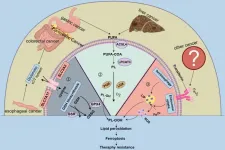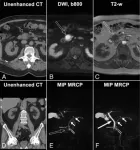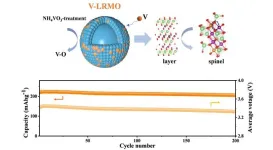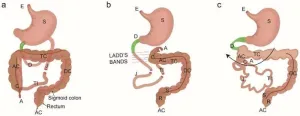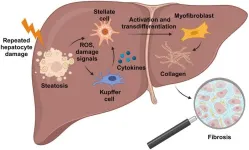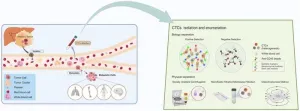(Press-News.org) An international team of researchers has provided a genetic diagnosis for 30 individuals whose condition was undiagnosed for years despite extensive clinical or genetic testing. The study, conducted by researchers at Baylor College of Medicine, National University of Singapore and collaborating institutions worldwide, appeared in Genetics in Medicine, the official journal of the American College of Medical Genetics and Genomics.
“The story of our findings began with one patient I saw in the clinic presenting an uncommon combination of problems,” said first and co-corresponding author Dr. Daniel Calame, instructor of pediatric neurology and developmental neurosciences at Baylor. “The patient had severe developmental conditions, epilepsy and complete insensitivity to pain, which was very atypical. The condition had remained undiagnosed despite numerous tests conducted by geneticists and neurologists.”
Calame enrolled the patient in the BCM GREGoR (Genomics Research to Elucidate the Genetics of Rare Diseases) research program. “We reanalyzed the patient’s genetic and clinical data and that brought us to a gene, FLVCR1, and a medical mystery to solve,” Calame said.
One gene, multiple conditions
To try to understand how the rare FLVCR1 mutation in the patient could lead to the condition, Calame and his colleagues researched scientific literature on this gene. Current evidence indicates that the FLVCR1 protein plays a key role in the production of red blood cells and in the transport of choline and ethanolamine in cells. Choline and ethanolamine are important for cells. They are precursors for phosphatidylcholine and for phosphatidylethanolamine, respectively, which are required for cell membrane integrity needed to support cell division and other essential cellular functions.
Other researchers have studied the Flvcr1 gene, the equivalent of the human gene, on animal models. They found that knocking out the gene in mice was lethal at the embryonic stage. “The embryos have many bone malformations in the head and limbs and defective production of red blood cells, which is reminiscent of Diamond-Blackfan anemia (DBA) in people,” Calame said. “But this was different from what we saw in our patient.”
Patients with DBA also have bone malformations. Interestingly, although the evidence in mice pointed at FLVCR1 as the gene causing DBA, the gene was not identified as playing a role in DBA patients at the time. Other genes were discovered that caused the condition.
In addition, other studies found rare defective copies of the FLVCR1 gene in patients with childhood or adult-onset ataxia, a condition characterized by poor muscle control and incoordination, who also had sensory problems and retinitis pigmentosa, or progressive vision loss. These problems also were not like those Calame was seeing in his patient.
“We were intrigued. On one hand, we had a patient with a rare FLVCR1 mutation and severe developmental conditions, epilepsy and complete insensitivity to pain, but on the other hand there were patients with rare mutations on the same gene that presented with a different set of problems,” Calame said. “Could it be that those different mutations of FLVCR1 caused not one set but a spectrum of characteristics we observed in all the patients combined?”
Solving the mystery of FLVCR1 brings answers to patients
The team searched for an answer to this mystery by combining two strategies. One strategy was to increase the number of patients they could study by identifying individuals with undiagnosed neurodevelopmental disorders and FLVCR1 gene variants in large, specialized datasets. They identified the patients either through the Baylor-Hopkins Center for Mendelian Genomics/BCM GREGoR database, the Baylor Genetics clinical diagnostic laboratory database, GeneMatcher or other research and clinical diagnostic laboratories.
“We identified 30 patients from 23 unrelated families with rare FLVCR1 variants,” Calame said.
The researchers found 22 gene variants, 20 of which had not been described before. The patients’ characteristics range from severe developmental disorders with profound developmental delay, microcephaly (a head much smaller than expected), brain malformations, epilepsy and premature death. Severely affected patients share traits, including anemia and bone malformations, with mice lacking the Flvcr1 gene and DBA, which had not been linked to FLVCR1 before.
The second strategy to find an answer to this medical mystery was to characterize the functional consequences of the FLVCR1 variants in laboratory experiments in collaboration with Dr. Long Nam Nguyen and colleagues at the Yoon Long Lin School of Medicine, National University of Singapore. The team wanted to better understand the effect the different variants they found in patients would have on choline and ethanolamine transport in cells in the lab. They found that FLVCR1 variants significantly reduce choline and ethanolamine transport – up to half of the transport seen with normal FLVCR1 proteins. “We propose that disease severity depends on the residual transport activity of the FLVCR1 variants a patient carries,” Calame said.
Other studies have shown that choline is required for normal neurodevelopment and that its deficiency also causes anemia, liver disease, growth retardation and immune deficiency. “Neurodevelopment is also disrupted by defective choline uptake, and we showed that the variants in our patients do reduce choline transport,” Calame said.
Altogether, the findings demonstrate that FLVCR1 variants cause a broad spectrum of developmental problems ranging from severe multiorgan developmental disorders resembling DBA to adult-onset neurodegeneration. The variants identified in patients reduce choline and ethanolamine transport in cells in the lab, suggesting that transport of these molecules into the central and peripheral nervous systems is essential to prevent neurodegeneration and required for normal neurodevelopment.
“Our findings also support further studying the potential therapeutic value of choline or ethanolamine supplementation in FLVCR1-related diseases,” Calame said. “The 30 patients we identified had not had a diagnosis for years; it was rewarding to be able to provide an explanation for their condition.”
This study also underscores the importance of approaching the diagnosis of rare conditions with a wide perspective. “The 30 severely affected individuals reported here had all undergone clinical or research exome or genome sequencing, which identified the reported FLVCR1 variants, yet in each case the variants were previously felt either non-contributory or of uncertain significance given the apparent mismatch of characteristics among patients,” Calame said. “Such false assumptions illustrate the importance of incorporating model organism data into personalized genome analysis for rare diseases and the need to anticipate more severe and milder patient characteristics associated with each disease gene to maximize the yield of diagnostic genetic testing.”
For the complete list of authors, their affiliations and financial support for this project, see the publication.
Interested in participating in the BCM GREGoR research program? Contact Dr. Calame at calame@bcm.edu.
###
END
One gene provides diagnoses for 30 patients whose condition was unexplained for years
2024-11-08
ELSE PRESS RELEASES FROM THIS DATE:
Current practice and emerging endoscopic technology in the diagnosis of colorectal cancer
2024-11-08
The evolution of gastrointestinal (GI) endoscopy has transformed CRC diagnostics since its early 20th-century origins. Initial rigid endoscopes provided limited visualization, were highly uncomfortable for patients, and only partially visualized the colon. With the introduction of fiber-optic technology in the 1950s, endoscopy began transmitting real-time images, greatly enhancing diagnostic applications for GI conditions. Today, CRC remains a primary target for endoscopic screening due to its high prevalence as the second leading cause of cancer ...
Decoding 17-beta-hydroxysteroid dehydrogenase 13: A multifaceted perspective on its role in hepatic steatosis and associated disorders
2024-11-08
Chronic liver disease (CLD) is a growing global health challenge, accounting for millions of deaths each year. Its major contributors include metabolic dysfunction-associated steatohepatitis (MASH), alcoholic liver disease (ALD), and hepatitis C virus infection. These conditions are closely tied to hepatic steatosis, a condition characterized by the abnormal accumulation of fat in the liver. Recent genome-wide association studies have identified the 17-beta-hydroxysteroid dehydrogenase 13 (HSD17B13) gene and its loss-of-function variant ...
Key pathway leading to neurodegeneration in early stages of ALS identified
2024-11-08
Approximately 5,000 people in the U.S. develop amyotrophic lateral sclerosis (ALS) each year. On average, they survive for only two to five years after being diagnosed, according to the Centers for Disease Control and Prevention. The rapidly progressing neurodegenerative disease causes the death of neurons in the brain and spinal cord, resulting in muscle weakness, respiratory failure and dementia. Despite the devastating nature of the disease, little is known about what first triggers the deterioration of motor neurons at the onset of ALS.
Now, researchers from University of California San Diego and their colleagues ...
Ferroptosis in regulating treatment tolerance of digestive system tumors
2024-11-08
The global burden of digestive tract tumors is profound, with these cancers accounting for nearly half of all malignant tumors worldwide. Despite advancements in endoscopic diagnostic methods, which enable earlier detection and treatment, a large portion of patients still receive diagnoses at later stages. For these patients, chemotherapy, radiation, and immunotherapies are often the only viable options, yet resistance to treatment remains common, leading to high recurrence and mortality rates. Research increasingly shows that ferroptosis may be a key mechanism to reverse treatment tolerance. Ferroptosis, characterized by ...
A promising future in pancreatic incidentaloma detection
2024-11-08
In recent research published in eGastroenterology, Dr. J-Matthias Löhr and colleagues provide an in-depth review of diagnostic methods for pancreatic incidentaloma—incidental findings often detected during imaging scans intended for other conditions. These pancreatic lesions, which vary in severity, can occasionally signal pancreatic cancer in its earliest stages. However, traditional methods, including MRI and CT scans, are limited by invasiveness, cost, and variable sensitivity to early pancreatic changes.
The research highlights ...
Stabilizing lithium-ion batteries: The vanadium touch
2024-11-08
As demand surges for electric vehicles and energy storage systems, lithium-ion batteries need to deliver higher energy densities at lower costs. While conventional cathode materials like LiFePO4 and Li-Ni-Co-Mn-O are widely used, they often fail to balance performance with affordability. Lithium-rich manganese oxides (LRMOs) have emerged as a potential alternative due to their high capacity and cobalt-free composition. However, their low initial Coulombic efficiency and rapid voltage decay have limited their broader application. Addressing these challenges requires deeper research to stabilize LRMOs for widespread commercial use.
In September, 2024, a team from Guangdong University of Technology, ...
Innovative approaches to the surgical challenges in the management of gastroschisis
2024-11-08
Gastroschisis, a congenital abdominal wall defect, has transformed from a uniformly fatal condition to one with a 95% survival rate through surgical advancements over the past six decades. The primary goal of managing gastroschisis is to mitigate fetal and postnatal risks, including damage from herniated bowel loops and ensuring effective decompression of the gastrointestinal tract during recovery. This review focuses on both preventative and corrective aspects of gastroschisis management, highlighting innovations in neonatal surgery that improve quality of life and long-term health outcomes.
Definition ...
Mouse models for the study of liver fibrosis regression in vivo and ex vivo
2024-11-08
Liver fibrosis is a progressive and potentially reversible condition that results from chronic liver damage, which can be caused by a variety of factors, including metabolic dysfunction-associated steatotic liver disease (MASLD), alcohol abuse, and viral hepatitis. MASLD affects a significant portion of the global population and can progress to metabolic dysfunction-associated steatohepatitis (MASH), leading to liver cirrhosis if left untreated. Given the prevalence of MASLD and its related conditions, the study of fibrosis and its regression ...
At Fortune Global Forum 2024, Alex Zhavoronkov PhD, Founder and CEO of Insilico Medicine, discusses AI business potential
2024-11-08
From November 11 to 12, the Fortune Global Forum 2024, an invite-only premier event of Fortune, is set to gathers the leaders of the world’s biggest multinational companies on the dynamic frontiers of global business in New York, where business leaders from around the globe come together to create a modern roadmap for success.
Insilico Medicine(“Insilico”), a global leading generative artificial intelligence (AI)-driven biotechnology company, announces that Alex Zhavoronkov PhD, founder and CEO of Insilico Medicine will be attending the Fortune ...
Exploring circulating tumor cells: Detection methods and biomarkers for clinical evaluation in hepatocellular carcinoma
2024-11-08
Hepatocellular carcinoma (HCC) is a significant global health concern, particularly in regions like the Asia-Pacific, where chronic viral hepatitis and liver diseases contribute to its high incidence and mortality. Despite medical advancements, the late-stage diagnosis of HCC remains a major challenge, which underscores the need for more effective early detection strategies. Circulating tumor cells (CTCs), which are tumor cells released into the bloodstream from primary neoplastic sites, offer a promising avenue for non-invasive cancer diagnostics. This review provides a comprehensive overview of CTC detection methods, ...


